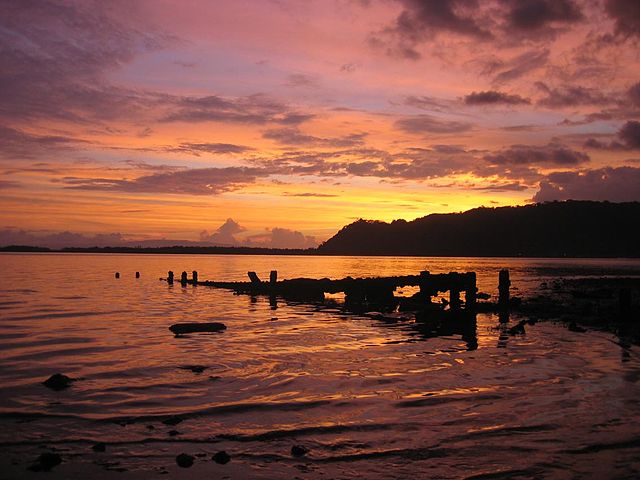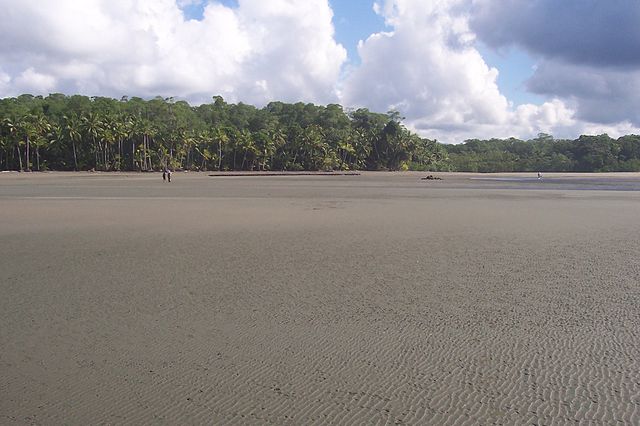
Golfito
Those who choose to remain in Costa Rica can continue their journey from Paso Canoas along the border via the towns of La Cuesta and Laurel, traveling in a large arc via Pueblo Nuevo (New Village) to Golfito on the Golfo Dulce, the “Sweet Gulf.” Many destinations in southern Costa Rica can be reached from here: the Golfito Game Reserve, beautiful bays, and the Osa Peninsula, with its dreamy beaches, national parks and idyllic small fishing villages.
The United Fruit Company (UFC) founded Golfito in 1938, when it moved its central administrative center from the Caribbean coast. During the Second World War, many sailors aboard battle ships stopping there were attracted to the town’s ladies of pleasure. Golfito’s reputation as a city of sin soon traveled across the sea. It wasn’t until 1945 that bananas regained their importance in the city’s economy. By the 1950s, multinational concerns were shipping 90 percent of their banana crop from the harbor of Golfito. The jobs and the major source of its income disappeared suddenly 30 years later when the UFC, following a series of strikes, closed its facilities and left Golfito. They left behind a quiet, typical onestreet village built along the sixkilometer main axis at the mouth of the Rio Golfito. It is surrounded by heavily wooded mountain slopes, lies protected within a large ocean bay, and is connected to the outside world by an airport.
The United Fruit Company also left behind its division of Golfito into two parts. In the north is the Zona Americana, a quiet residential neighborhood with pretty bungalows, generously furnished schools, a hospital and playing fields. UFC’s managers occupied the Zona Americana. Today it is full of U.S. and Canadian retirees who come here to spend their golden years in a climate without cold and snow.
In the south is the second part of the city, known as Pueblo Civico. Until 1985 it was a typical blue-collar neighborhood. Today all that remains are simple houses, a few cheap bars, hotels and a handful of bordellos. The differences between the two parts of town have diminished since UFC’s departure, and are less and less noticeable every year.
Hundreds of jobs disappeared when the United Fruit Company left Golfito. The inhabitants were threatened with poverty, and the city was on its way to becoming a ghost town. In order to slow down its decline, the Costa Rican government established a free trade zone in the city (deposito libre). In practice, however, the move meant that a shopping center containing 50 stores was built north of the American Zone.
Golfito, fortunatley, also has something more to offer, the Golfito Game Preserve. The park’s Visitor Center now occupies the old administration building vacated by the United Fruit Company. The 1,300-hectare Golfito Game Preserve was established, first and foremost, to protect the area’s rivers and bay, which are so vital to the lives and welfare of Golfito’s inhabitants. The plants and animals have also benefitted from the establishment of this protected zone.
The rain forest and its fern trees, kapok and butternut trees is spreading rapidly. More than 150 bird species, including hummingbirds, toucans and trogons, nest in the park. Anteaters, coatis, monkeys, peccaries, agoutis, tree ocelots, raccoons and jaguarundis have found protection in the preserve.




